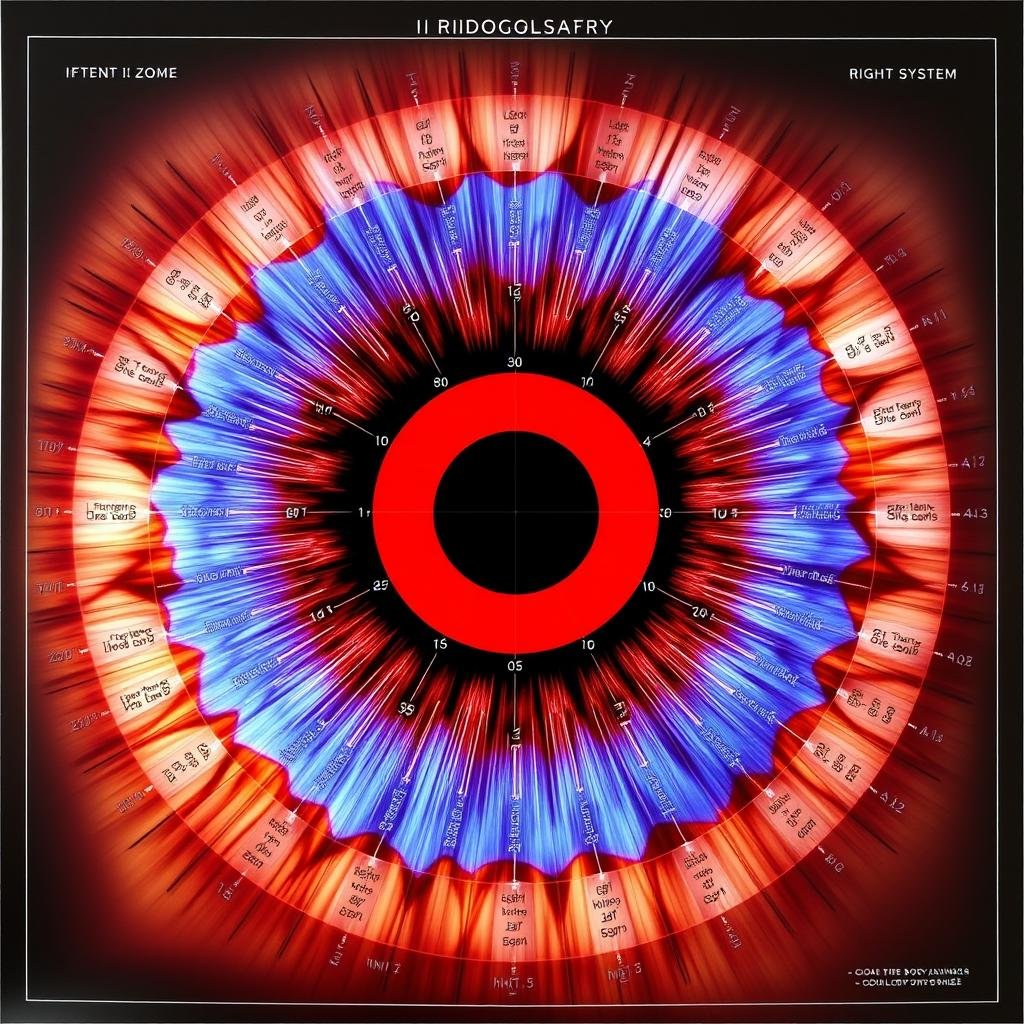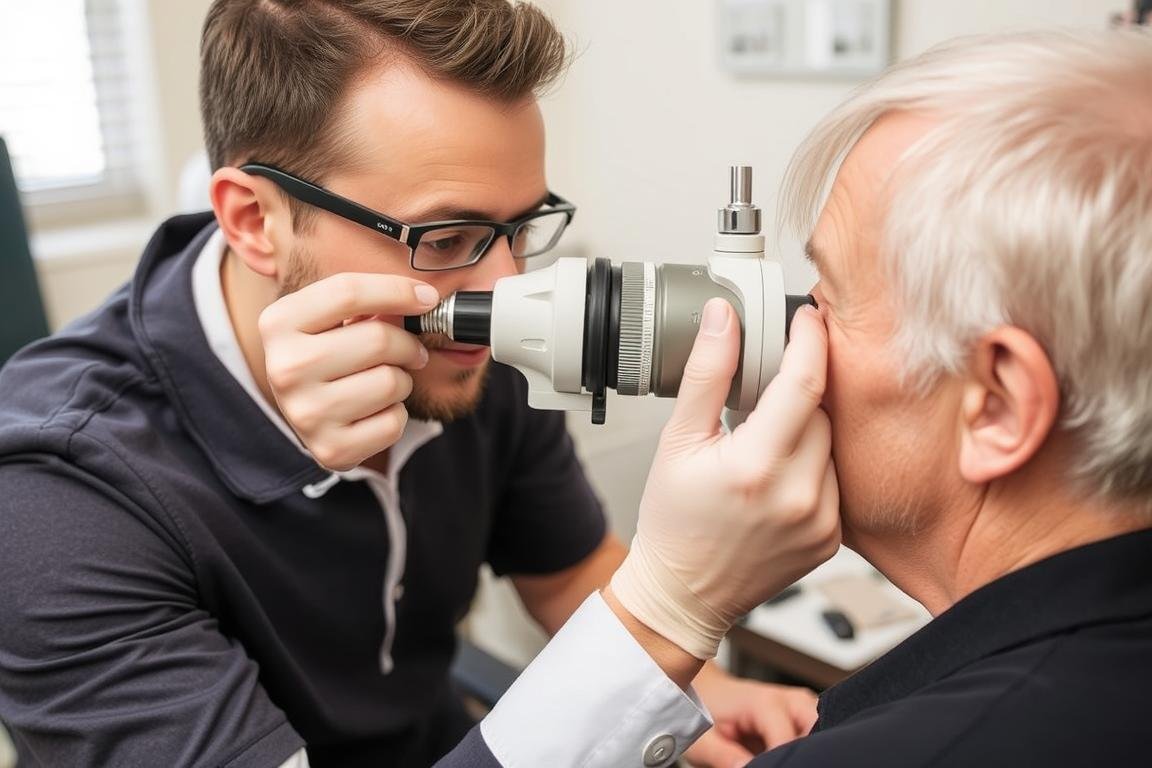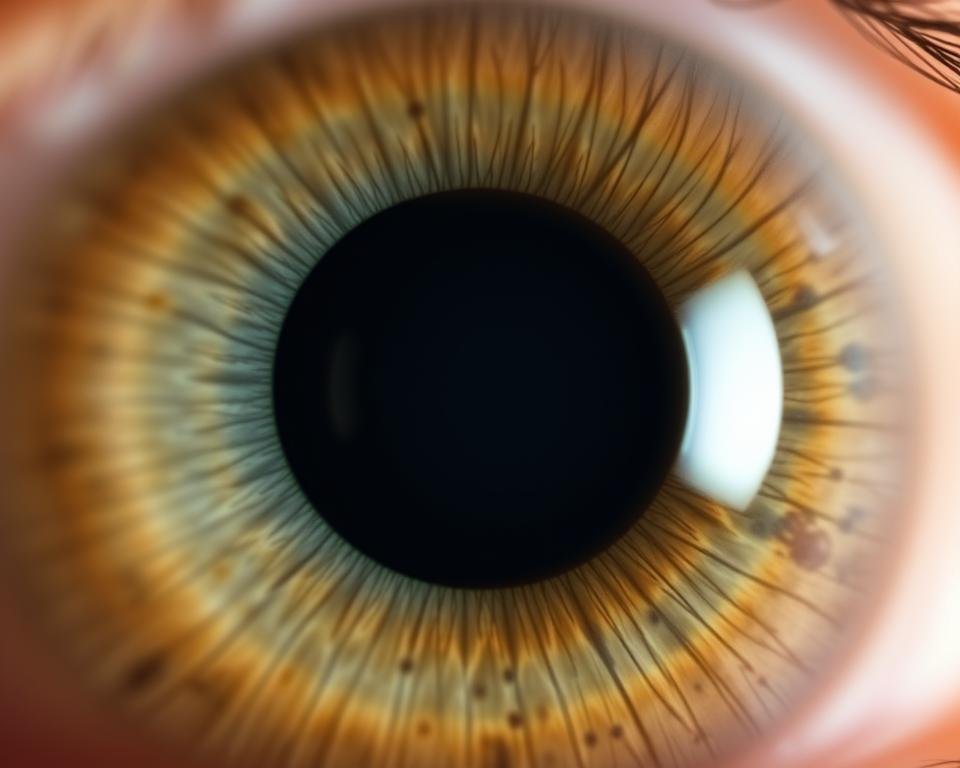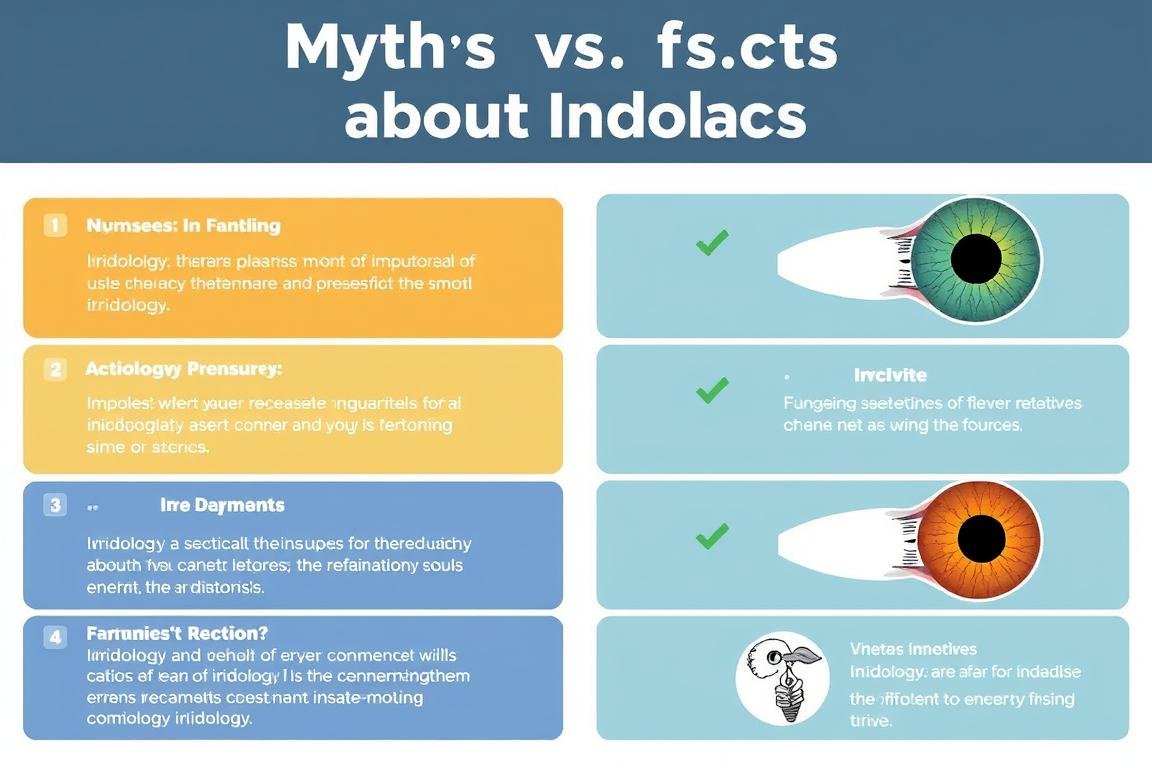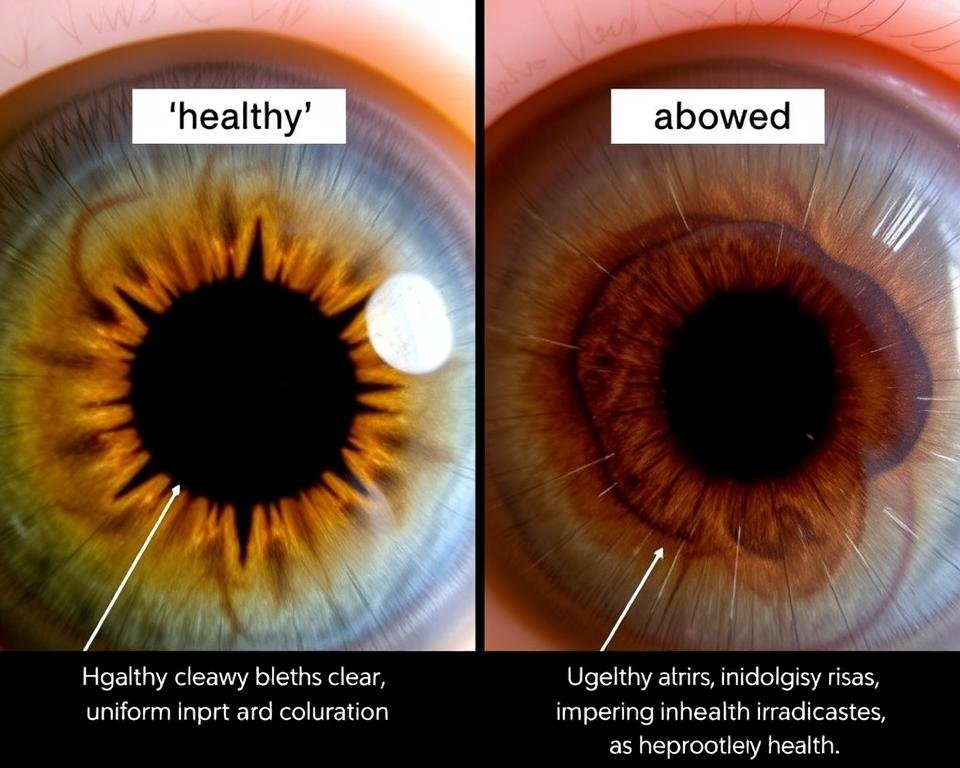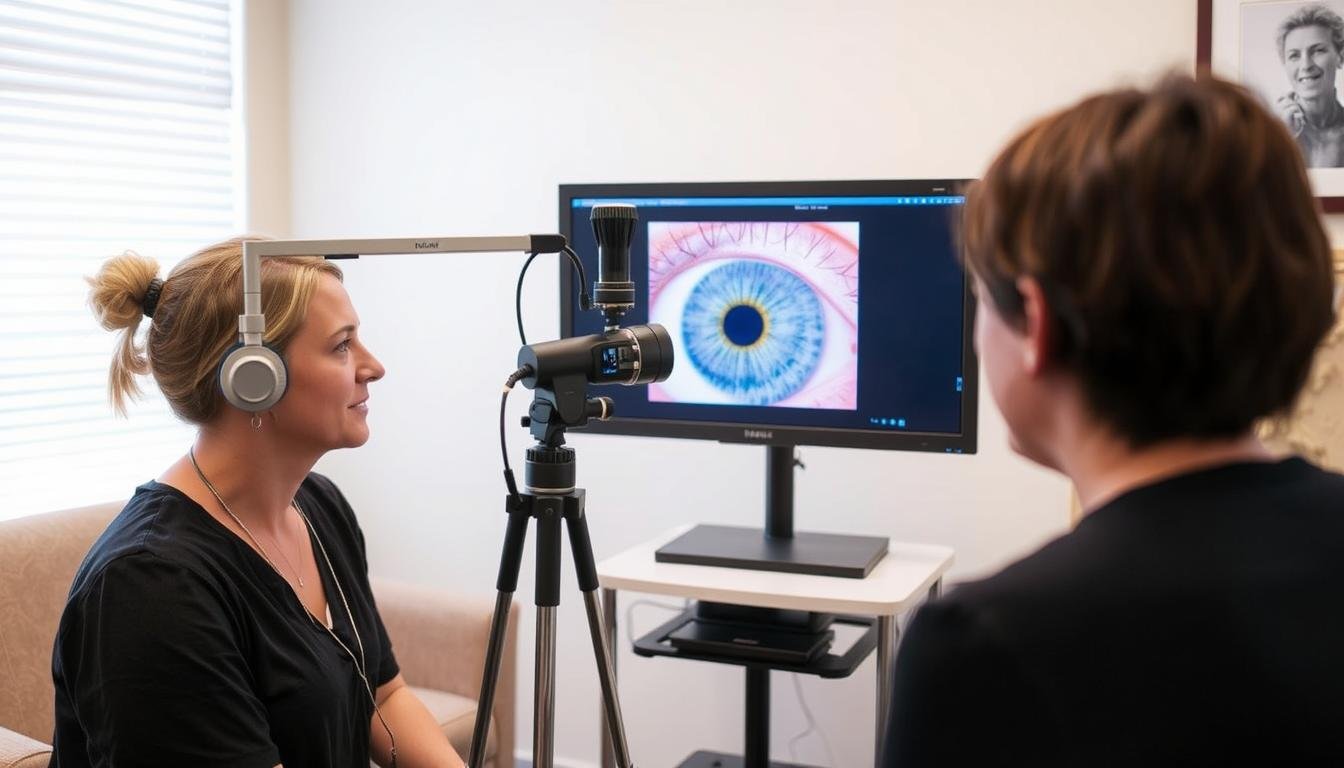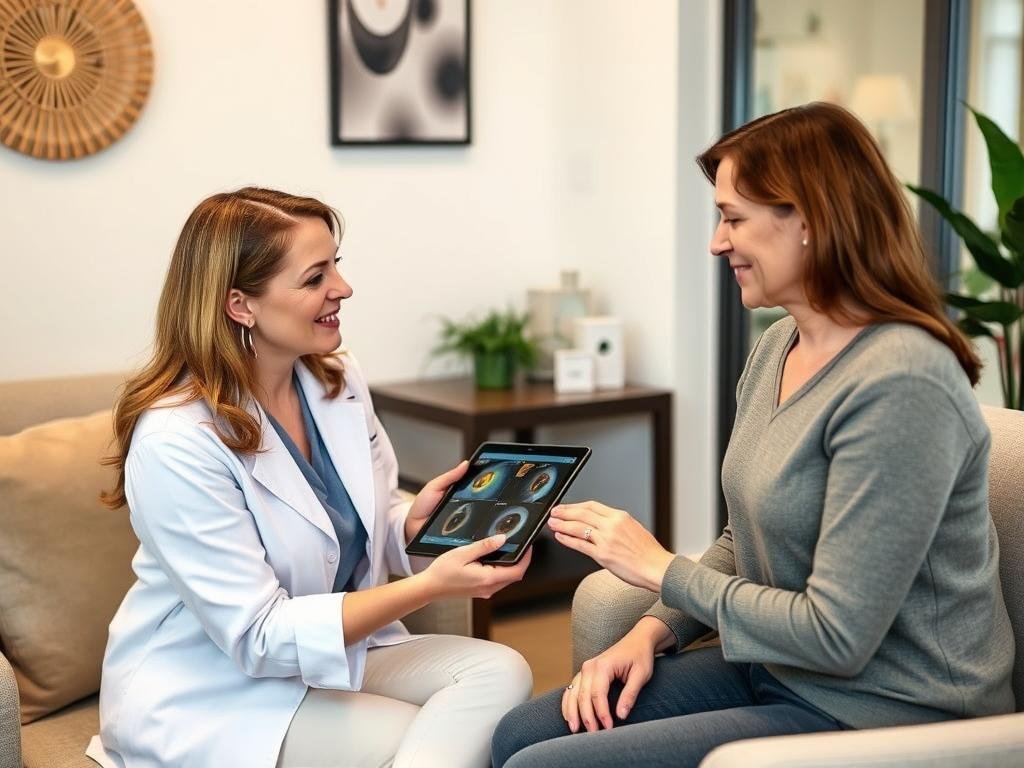A antiga prática de Diagnóstico da IRIS de iridologia suggests that your eyes may reveal more than just your vision health—they could offer insights into your overall wellbeing. This alternative diagnostic method examines the patterns, colors, and characteristics of the iris (the colored part of your eye) to identify potential health concerns throughout the body. While controversial in conventional medicine, Diagnóstico da IRIS de iridologia has gained popularity among holistic health practitioners as a non-invasive assessment tool. This comprehensive guide explores the principles, history, and applications of this fascinating practice.

A História de Diagnóstico da IRIS de iridologia
As raízes de Diagnóstico da IRIS de iridologia can be traced back thousands of years, with evidence suggesting early forms were practiced in ancient Egypt, China, and India. However, modern iridology as we know it today emerged in the 19th century through the work of Hungarian physician Dr. Ignatz von Peczely.
As a child, von Peczely reportedly noticed changes in an owl’s iris after the bird suffered a broken leg. This observation sparked his curiosity, leading him to develop the first comprehensive iris chart in 1880. His work mapped connections between specific iris markings and various organs and systems throughout the body.
The practice was further developed by Swedish homeopath Nils Liljequist, who noticed changes in his own iris after taking medications. Throughout the 20th century, practitioners like Bernard Jensen in the United States and Josef Deck in Germany refined the methodology and created more detailed iris charts that are still used today.
Como Diagnóstico da IRIS de iridologia Works: Mapping the Iris


At the core of Diagnóstico da IRIS de iridologia is the belief that the iris connects to every organ and tissue in the body through the nervous system and can reflect changes in these tissues. Practitioners use specialized tools to examine the iris and compare their observations with standardized charts.
The Role of Iris Pigmentation in Iridology Diagnosis
Iridologists analyze several aspects of the iris, including:
- Color variations and discolorations
- Recursos estruturais como anéis, pontos e linhas
- Fiber patterns and their integrity
- Density and texture of the iris fibers
- Light and dark areas indicating different tissue conditions
Each iris is divided into approximately 60 zones corresponding to different parts of the body. The right iris is believed to reflect the right side of the body, while the left iris corresponds to the left side. Changes in specific zones may indicate imbalances or stress in the corresponding body areas.
Tools Used in Modern Iridology Iris Analysis

Contemporary iridologists use various tools to conduct thorough examinations:
- Iriscopes – specialized microscopes designed for iris examination
- Digital cameras with macro lenses for high-resolution iris photography
- Software programs that analyze iris patterns and highlight areas of concern
- Illuminated magnifiers for detailed observation
- Standardized iris charts for reference and comparison
Obtenha seu gráfico de iridologia grátis
Download our comprehensive iridology reference chart to learn how different parts of the iris correspond to various organs and systems in your body.
Baixe o gráfico gratuito
Benefits and Applications of Diagnóstico da IRIS de iridologia

Proponentes de Diagnóstico da IRIS de iridologia highlight several potential benefits of this practice as a complementary health assessment tool:
Detecção precoce
Iridologists claim that changes in the iris may indicate developing health issues before symptoms appear, potentially allowing for preventive measures.
Avaliação não invasiva
Unlike blood tests or biopsies, Diagnóstico da IRIS de iridologia requires no needles, incisions, or discomfort—just a simple examination of the eye.
Holistic Perspective
This approach considers the whole person rather than isolated symptoms, potentially revealing connections between different body systems.
Complementary Tool
While not a replacement for medical diagnosis, iridology can complement other health assessments and guide lifestyle modifications.
Estudos de caso: Diagnóstico da IRIS de iridologia na prática

Many practitioners document case studies where Diagnóstico da IRIS de iridologia has helped identify underlying health concerns:
“A 42-year-old patient came to me with chronic fatigue. Traditional tests showed nothing abnormal, but iridology revealed signs of liver congestion and digestive weakness. After dietary changes and targeted supplements, both her iris markings and energy levels improved significantly within three months.”
– Dr. Sarah Jennings, Iridologist
While individual cases can be compelling, it’s important to note that these reports are anecdotal and not equivalent to controlled scientific studies.
Find a Qualified Iridology Practitioner
Interested in experiencing an iridology session? Connect with certified practitioners in your area who can provide professional iris analysis.
Locate a Practitioner
Common Conditions Identified Through Iridology

Praticantes de Diagnóstico da IRIS de iridologia claim to identify various health conditions by examining specific changes in the iris. Here are some of the most commonly reported findings:
Problemas digestivos
Discolorations around the pupil may indicate problems with the digestive system, including the stomach and intestines. Yellowish tints might suggest liver or gallbladder concerns.
Inflamação
White marks or cloudy areas in specific zones of the iris may indicate inflammation in corresponding body parts. These markers can help identify chronic inflammatory conditions.
Stress Patterns
Certain iris formations may reveal how stress affects different organs. Radial lines or “anéis de estresse” can indicate nervous system tension and its impact on specific body systems.
Problemas circulatórios
A white ring around the outer edge of the iris (known as the sodium ring) may indicate high cholesterol or arterial plaque. Other vascular patterns can suggest circulation problems.
Lymphatic Congestion
Cloudy or hazy areas in specific iris zones may indicate lymphatic system congestion, potentially affecting immune function and toxin elimination.
Deficiências nutricionais
Various color changes and patterns may suggest vitamin or mineral deficiencies that could be addressed through dietary changes or supplementation.

One of the most commonly cited indicators in Diagnóstico da IRIS de iridologia is the presence of a ring around the iris, which some practitioners associate with high blood pressure or cardiovascular issues. Similarly, brown spots in certain areas may suggest liver concerns, while white markings might indicate inflammation or immune system challenges.
Nota importante: While iridology may suggest potential health concerns, it should not replace proper medical diagnosis. Always consult with healthcare professionals for any persistent or serious health issues.
Perspectivas científicas em Diagnóstico da IRIS de iridologia

The scientific community has expressed varying views on Diagnóstico da IRIS de iridologia, with conventional medicine generally skeptical of its diagnostic claims. Understanding both perspectives can help you make informed decisions about incorporating this practice into your health journey.
Argumentos de apoio
- A íris contém milhares de terminações nervosas conectadas ao cérebro
- Some studies suggest correlations between iris features and certain health conditions
- Non-invasive nature makes it a low-risk assessment tool
- May complement other diagnostic approaches
- Historical use across multiple cultures suggests potential value
Perspectivas críticas
- Pesquisa limitada revisada por pares que apoia a precisão do diagnóstico
- Controlled studies have failed to show consistent results
- Lack of standardization across practitioners
- Risk of delayed proper medical treatment if relied upon exclusively
- Potential for subjective interpretation of iris markings
Several controlled studies have examined the validity of Diagnóstico da IRIS de iridologia. A notable study published in the Journal of the American Medical Association tested the ability of iridologistas to detect kidney disease through iris examination. The results showed that the practitioners could not reliably identify patients with kidney disease based solely on iris patterns.
However, proponents argue that iridology is not meant to diagnose specific diseases but rather to identify areas of weakness or stress in the body. They suggest that the practice is most valuable as a complementary tool rather than a standalone diagnostic method.

| Aspecto | Medicina convencional | Iridologia |
| Abordagem diagnóstica | Disease-specific testing | Holistic pattern recognition |
| Evidence Base | Extensive clinical trials | Limited research, anecdotal evidence |
| Foco | Treating disease | Identifying imbalances |
| Invasiveness | Often involves invasive tests | Non-invasive observation only |
| Treinamento do praticante | Standardized medical education | Varies widely between practitioners |
Common Misconceptions About Diagnóstico da IRIS de iridologia

As with many alternative health practices, Diagnóstico da IRIS de iridologia is surrounded by several misconceptions that can lead to confusion about its proper role and limitations:
É Diagnóstico da IRIS de iridologia comprovado cientificamente?
While some research exists, Diagnóstico da IRIS de iridologia lacks the extensive scientific validation required by conventional medicine. It should be viewed as a complementary approach rather than a definitive diagnostic method. Current scientific consensus does not support iridology as a reliable way to diagnose specific diseases.
A iridologia pode diagnosticar doenças específicas?
Contrary to some claims, iridology is not designed to diagnose specific diseases like cancer or diabetes. Instead, it aims to identify areas of tissue weakness or stress that might predispose someone to certain health issues. Responsible practitioners emphasize that iridology should complement, not replace, conventional medical diagnosis.
How accurate is Diagnóstico da IRIS de iridologia for health assessment?
The accuracy of iridology varies widely depending on the practitioner’s skill and the specific health conditions being assessed. While some correlations between iris signs and health status have been observed, the practice lacks the standardized accuracy measurements found in conventional diagnostic tools. It’s best viewed as one piece of a broader health assessment puzzle.
Os padrões de íris mudam com as melhorias na saúde?
Some iridologists claim that iris patterns can change as health improves, but the scientific evidence for this is limited. While acute conditions like inflammation might cause temporary changes in eye appearance, the fundamental structure and color of the iris generally remain stable throughout life. What may change is the practitioner’s interpretation of these patterns as they learn more about your health history.

Practitioner Tip: When seeking an iridology session, look for practitioners who have formal training, use modern equipment for accurate iris imaging, and emphasize that iridology is a complementary tool rather than a replacement for medical care.
Primeiros passos com Iridologia

If you’re interested in exploring Diagnóstico da IRIS de iridologia as part of your health journey, here are some practical steps to get started:
- Research qualified practitioners – Look for iridologists with formal training, certification, and positive client testimonials. Many naturopathic doctors, holistic health practitioners, and some chiropractors offer iridology services.
- Prepare for your session – Before your appointment, compile your health history and current concerns. Avoid wearing contact lenses to your session, and consider bringing a list of questions.
- Understand the process – A typical session involves capturing high-resolution images of your irises, analysis by the practitioner, and a discussion of their observations and recommendations.
- Integrate with conventional care – Use insights from your iridology session as complementary information to share with your primary healthcare provider.
- Follow up appropriately – If your iridologist suggests nutritional changes or supplements, research these recommendations and discuss them with your healthcare team before making significant changes.
Ready to Learn More About Iridology?
Deepen your understanding of Diagnóstico da IRIS de iridologia with our comprehensive online course. Perfect for both curious beginners and health practitioners looking to expand their skills.
Explore Our Courses
Conclusion: The Place of Iridology in Modern Health

Diagnóstico da IRIS de iridologia offers a fascinating window into the potential connections between the iris and overall health. While scientific validation remains limited, many individuals find value in this holistic assessment tool when used appropriately as part of a comprehensive approach to wellbeing.
The most balanced perspective views iridology not as a replacement for conventional medicine but as a complementary practice that may provide additional insights into your health. By maintaining open communication between all your health practitioners and approaching iridology with informed curiosity, you can determine whether this ancient practice has a place in your modern health journey.
Whether you’re drawn to iridology out of curiosity, as a preventive health measure, or as part of exploring holistic health options, approaching it with both an open mind and healthy skepticism will serve you well. The eyes may indeed be windows to more than we typically perceive—but they’re best viewed alongside the full landscape of modern healthcare options.
Comece sua jornada de iridologia hoje
Download our free beginner’s guide to Diagnóstico da IRIS de iridologia and receive weekly tips on natural health approaches.
Obtenha seu guia gratuito




